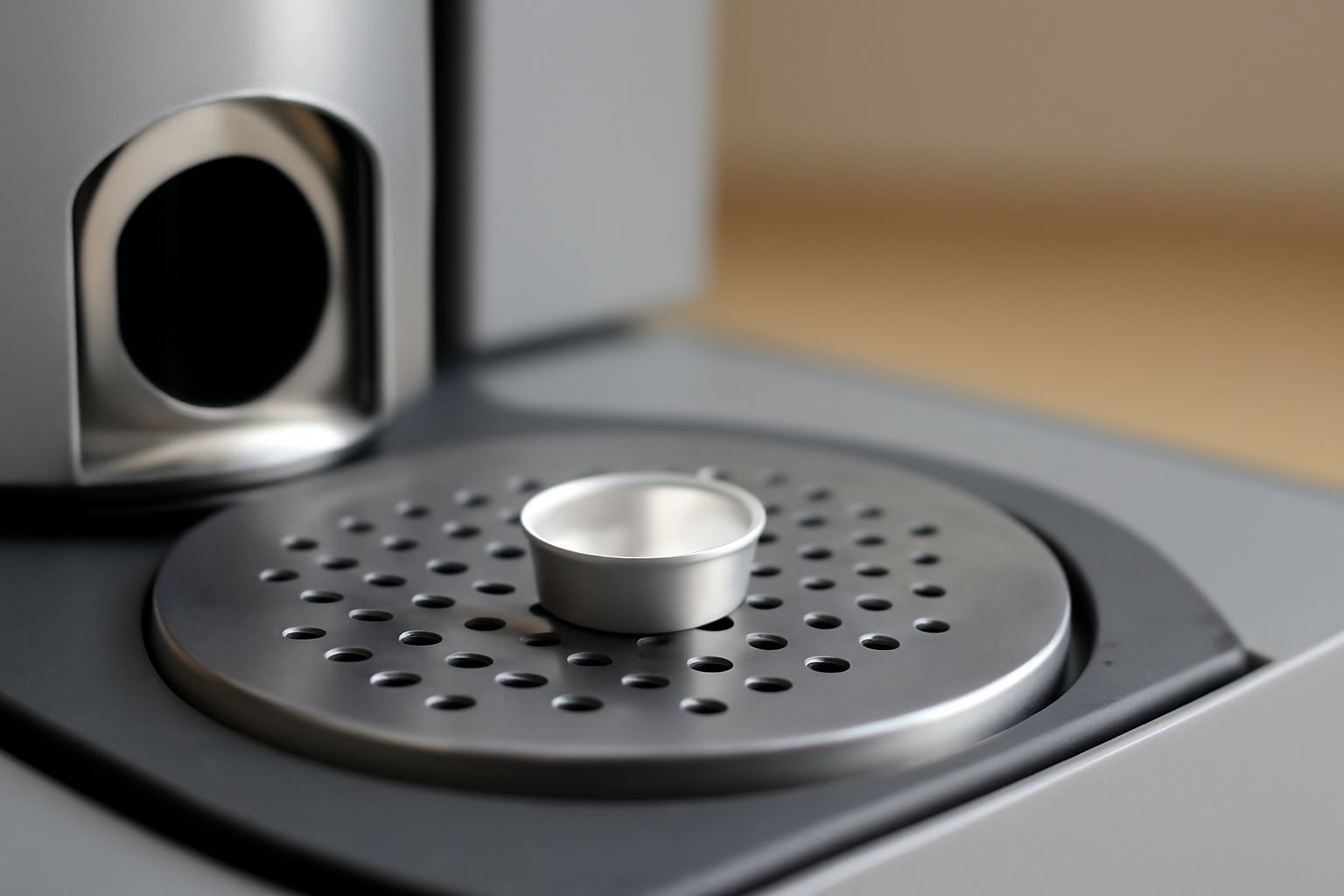Your cart is empty.
shop now
Your cart is empty.
shop now
Unexpected baseline noise or poor peak quality disrupts many polymer DSC tests. These problems often stem from pan impurities, improper sealing, or fit issues, reducing confidence in measurements.
High-purity aluminum pans minimize baseline shifts and contamination in polymer DSC analysis. Their inert, uniform structure supports clear melting and crystallization measurements and prevents overflow, deeply improving data accuracy and reproducibility.

Drawing on my experience with many polymer labs, I address the most common DSC problems and show how switching to high-purity aluminum pans can remove obstacles to better thermal analysis.
Baseline jumps and drift in DSC are common and mask real thermal behavior in polymers. These shifts make it hard to determine glass transition or melting points precisely.
The main causes are pan contamination, variable alloy composition, or irregular thickness. High-purity aluminum pans provide uniform heat flow and inertness, keeping the baseline steady and reliable.
| Issue Source | Effect on DSC | High-Purity Pan Solution | Reference |
|---|---|---|---|
| Pan alloying impurities | Signal drift, noise | ≥99.99% pure Al, clean baseline | ScienceDirect |
| Surface contamination | Random baseline jumps | Certified clean pans | Lab SOP |
| Uneven wall thickness | Heat flow errors | Precise CNC manufacturing | Instrument manual |
I always use new, certified high-purity aluminum pans for sensitive polymer transitions. This practice virtually eliminates baseline fluctuation, improving the trustworthiness of my DSC datasets.
Sample contamination from pans can lead to false peaks, unexpected reactions, or even sample loss. Inadequate cleaning or residual factory lubricants are often overlooked culprits.
High-purity aluminum pans, delivered cleaned and without foreign residues, prevent unwanted reactions. Their inert surface forms a barrier, keeping polymer samples pure during thermal scans.
| Risk Type | PVC of Problem | Role of High-Purity Pan | External Source |
|---|---|---|---|
| Factory oil residue | Spurious heat events | Supplier-certified clean | Supplier doc |
| Impurities in pan metal | Oxidation, colored peaks | QC 99.99% pans | Aluminum basics |
| Cross-contamination | Sample carry-over | Disposable, low-cost pans | ScienceDirect |
For routine and critical runs, I use only supplier-cleaned pans or subject new stock to a quick acetone wash. High-purity pans keep polymers free from spectral artifacts during measurement.
A poor DSC pan choice creates lag in temperature response or uneven sample heating, distorting melting and crystallization peaks in polymers and skewing comparative data.
High-purity aluminum pans allow uniform heat transfer and quick thermal response, delivering sharper and more accurate melting peaks—ideal for analyzing closely spaced transitions in polymer systems.
| Error Source | Polymer Problem | High-Purity Pan Advantage | Further Reading |
|---|---|---|---|
| Poor thermal contact | Broad/shifted melting peak | Precision CNC pan, uniform wall | Nature |
| Thermal lag | Delayed peak appearance | High conductivity Al | Instrument manual |
| Reactive impurities | Peak splitting or noise | Inert, no-catalyst pan surface | ScienceDirect |
Every time I switch to high-purity aluminum pans, I get narrower melting points and cleaner transitions, making comparison between samples or standards much more straightforward.
Overflow or spillage during heating is a common issue, especially when too much polymer is loaded or the pan is poorly matched to the DSC furnace tray.
High-purity aluminum pans are manufactured with tight dimensional tolerances and smooth walls, limiting overflow by ensuring an exact fit and promoting capillary containment of melted samples.
| Overflow Cause | Analysis Effect | High-Purity Pan Feature | Supplier Reference |
|---|---|---|---|
| Overfilled pan | Mess, lost signal | Specify lower sample mass | Polymer Journal |
| Loose or tilted fit | Leaking sample | Consistent, tight pan diameter | Instrument specs |
| Warped pan wall | Loss of heat transfer | High-purity, thick pan wall | QC data |
I recommend always weighing out polymer samples precisely and inspecting pans for visible warping before setup. Certified high-purity pans make it easier to stick to these best practices every time.
Switching to high-purity aluminum pans corrects many common DSC errors, makes polymer transition detection more precise, and ensures the trustworthiness of every thermal analysis report.
Contact technical support: info@redthermo.com